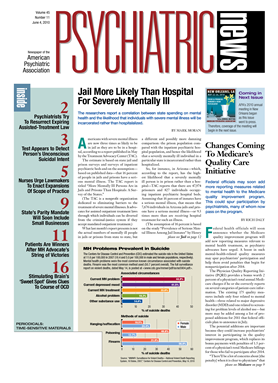A test that assesses a person's unspoken suicidal intent can measure and potentially predict his or her risk of suicide better than currently available methods, a new study has found.
The test is adapted from the Implicit Association Test (IAT), a tool initially developed by psychologists Brian Nosek, Ph.D., at the University of Virginia, Mahzarin Banaji, Ph.D., at Harvard University, and Tony Greenwald, Ph.D., at the University of Washington. The IAT is a computerized test that asks the subject to quickly categorize a series of words or pictures by a set of criteria and, by comparing the person's reaction time, measure implicit attitudes or feelings that may not be consciously apparent.
The IAT has been used in psychological research to measure people's attitudes or prejudices toward a variety of characteristics such as gender, race, disability, age, and weight. For example, one of the tests measures the strength of one's implicit association between “women” and “science.” Another test measures a person's implicit association between skin color (white versus black) and preference (favorable versus unfavorable).
In this suicide-related study, Matthew Nock, Ph.D., a professor of psychology at Harvard University, and colleagues gave an IAT to 157 patients who presented to Massachusetts General Hospital's psychiatric emergency department. This version of the IAT specifically measures a person's implicit association between the concept of death or suicide and self.
On the IAT, the 43 patients who presented to the emergency department after a suicide attempt showed a stronger implicit association between death/suicide and self than the 114 individuals who were experiencing a nonsuicidal psychiatric emergency. This correlation between death/suicide and self association and suicide attempt remained statistically significant after the researchers controlled for a diagnosis of depressive disorder and for prior suicide attempts.
The IAT is a useful tool to measure suicidal intent, because it has been shown to reveal people's thoughts regardless of whether they are consciously aware of these thoughts or whether they are willing to tell the thoughts to others, Nock told Psychiatric News.
Previous research has shown that directly questioning a person's suicidal intent is not a very accurate or reliable method of assessing suicide risk, the authors noted in their report in the April Psychological Science. People contemplating or planning suicide may deny their intentions to avoid outside interventions. The computer-administered IAT captures and measures a subject's automatic association in milliseconds. If a person takes too long to think about an answer, the test does not generate a valid result.
Interestingly, the study further discovered that this implicit association of death/suicide and self, recorded at the time of the emergency visit, significantly predicted the risk of another suicide attempt in the ensuing six months.
Among other methods for measuring suicide risks at the time of the emergency department visit, clinicians' predictions of suicide risk were not statistically predictive of future attempts, but the patient's own prediction was. The IAT's predictive power was stronger than the patient's prediction as well as other known risk factors such as the presence of depressive disorder or past suicide attempts.
Whether the IAT can predict a person's suicide risk when he or she is not in acute distress, such as in the primary care setting, remains to be verified, Nock emphasized. “We are still experimenting with the test with different versions and different patient samples,” he said. He and his colleagues are currently testing a modified version of the IAT in pediatric and adolescent patients in psychiatric hospitals.
Although the IAT was administered during a psychiatric emergency visit, it was well received by study participants, and the other psychological measurements taken before and after the test showed no increase in their distress, according to Nock. If the validity of the test is replicated and confirmed, it will be practical and easy to use in the clinical setting.
“It takes five minutes, and all you need is a laptop,” he said. Nevertheless, he cautioned that the results must be replicated. “It is not ready for clinical use yet.”
